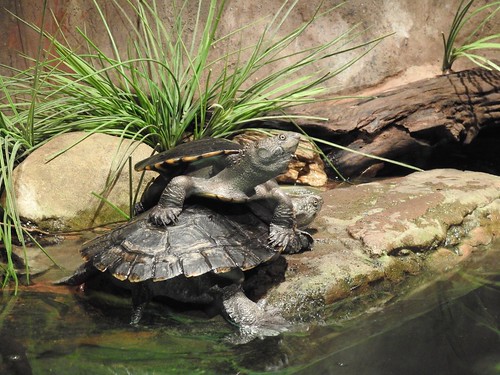Well-tissue culture plates at a density of 36106 cells/well. The cells were incubated for 12 hours then washed three times with PBS prior to fresh media being added to the cells. The supernatant was collected 24 hours later and is referred to as eNOS-GFPpositive and eNOS-GFP-negative media, respectively. TNF-a treated podocyte cell culture. Podocytes were seeded in 6 well-plates at a density of 16106 cells per well and cultured initially at 33uC (propagating condition) prior being cultured at 37uC (differentiating condition). Five days after differentiation had commenced, conditioned media was added to the cells. The medium was changed to 0.1 FBS on day 7. Podocytes were stimulated with 10 ng/ml TNF- a for 36 hours before harvesting.Glomerular Endothelial Cell InjuryFigure 4. Glomerular endothelial cell and podocyte damage in ADR-induced nephropathy in C57BL/6 mice with eNOS deficiency. Time course of glomerular endothelial cell CD31 (A ) and podocyte synaptopodin (F ) staining MedChemExpress 3PO sections from NS-treated kidneys at day 28 (A F), ADR-treated kidneys at days 3 (B G), 7 (C H), 14 (D I) and 28 (E J). Graph showing quantification of the area of CD31(K) and synaptopodin (L) staining. One-way ANOVA, n = 5, data are means 6 SD. Vs NS day 28, * P,0.05; **P,0.01; ***P,0.001. doi:10.1371/journal.pone.0055027.gHistological assessmentA coronal slice of kidney tissue was fixed in 4 paraformaldehyde and embedded in paraffin. Tissue was cut at 4 mm and stained with hematoxylin, PAS, and Masson’s trichrome. The degree of glomerulosclerosis and interstitial fibrosis were measured using Image J software (http://rsb.info.nih.gov/ij/). The percentage of glomerulosclerosis was calculated by dividing the total area of PAS positive staining in the glomerulus by the total area of the glomerulus. Interstitial fibrosis was quantified by dividing the area of trichrome stained interstitium by the total cortical area. The mean value of 20 randomly selected glomeruli or five cortical fields was determined for each section. Five sections were selected from each kidney.Antigen RetrievalParaffin tissue sections (4 mm) were incubated at 60uC overnight before dewaxing with 2 changes of xylene and 100 ethanol. Tissue sections were immersed in sodium citrate buffer (10  mM sodium citrate, pH 6.0) and heated up in a pressurized cooker to 100uC for 10 minutes. Tissue sections were cooled down to room temperature and prepared for standard immunofluorescence staining procedure.Confocal MicroscopyRenal sections were blocked with PBS containing 1 BSA and incubated with rabbit anti-synaptopodin (1:800) (Sysy antibody, Germany) or rat anti-CD31 (1:100) overnight at 4uC. SectionsGlomerular Endothelial Cell InjuryFigure 5. Apoptosis in glomerular endothelial cells and podocytes in ADR-induced nephropathy in C57BL/6 mice with eNOS deficiency. Apoptotic glomerular endothelial cells (A B) and podocytes (D E), triple labeled with terminal deoxynucleotidyl transferase-mediated TA01 site digoxigenin-dNTP nick end-labelling (TUNEL; A, B, D and E, green), anti-CD31 (A B, red) and anti-synaptopodin 16574785 (D E, red), were detected at days 3 (B) and 7 (E) after ADR injection in eNOS-deficient mouse kidneys. Positive apoptotic cells (B E) were counterstained with DAPI nuclear staining. Sections from NS-treated kidneys (A D) were used as controls. Quantification of CD31+/TUNEL+ glomerular endothelial cells (C) and synaptopodin+/TUNEL+ podocytes in glomeruli (F). Original magnification, 600 X. Magnification in i.Well-tissue culture plates at a density of 36106 cells/well. The cells were incubated for 12 hours then washed three times with PBS prior to fresh media being added to the cells. The supernatant was collected 24 hours later and is referred to as eNOS-GFPpositive and eNOS-GFP-negative media, respectively. TNF-a treated podocyte cell culture. Podocytes were seeded in 6 well-plates at a density of 16106 cells per well and cultured initially
mM sodium citrate, pH 6.0) and heated up in a pressurized cooker to 100uC for 10 minutes. Tissue sections were cooled down to room temperature and prepared for standard immunofluorescence staining procedure.Confocal MicroscopyRenal sections were blocked with PBS containing 1 BSA and incubated with rabbit anti-synaptopodin (1:800) (Sysy antibody, Germany) or rat anti-CD31 (1:100) overnight at 4uC. SectionsGlomerular Endothelial Cell InjuryFigure 5. Apoptosis in glomerular endothelial cells and podocytes in ADR-induced nephropathy in C57BL/6 mice with eNOS deficiency. Apoptotic glomerular endothelial cells (A B) and podocytes (D E), triple labeled with terminal deoxynucleotidyl transferase-mediated TA01 site digoxigenin-dNTP nick end-labelling (TUNEL; A, B, D and E, green), anti-CD31 (A B, red) and anti-synaptopodin 16574785 (D E, red), were detected at days 3 (B) and 7 (E) after ADR injection in eNOS-deficient mouse kidneys. Positive apoptotic cells (B E) were counterstained with DAPI nuclear staining. Sections from NS-treated kidneys (A D) were used as controls. Quantification of CD31+/TUNEL+ glomerular endothelial cells (C) and synaptopodin+/TUNEL+ podocytes in glomeruli (F). Original magnification, 600 X. Magnification in i.Well-tissue culture plates at a density of 36106 cells/well. The cells were incubated for 12 hours then washed three times with PBS prior to fresh media being added to the cells. The supernatant was collected 24 hours later and is referred to as eNOS-GFPpositive and eNOS-GFP-negative media, respectively. TNF-a treated podocyte cell culture. Podocytes were seeded in 6 well-plates at a density of 16106 cells per well and cultured initially  at 33uC (propagating condition) prior being cultured at 37uC (differentiating condition). Five days after differentiation had commenced, conditioned media was added to the cells. The medium was changed to 0.1 FBS on day 7. Podocytes were stimulated with 10 ng/ml TNF- a for 36 hours before harvesting.Glomerular Endothelial Cell InjuryFigure 4. Glomerular endothelial cell and podocyte damage in ADR-induced nephropathy in C57BL/6 mice with eNOS deficiency. Time course of glomerular endothelial cell CD31 (A ) and podocyte synaptopodin (F ) staining sections from NS-treated kidneys at day 28 (A F), ADR-treated kidneys at days 3 (B G), 7 (C H), 14 (D I) and 28 (E J). Graph showing quantification of the area of CD31(K) and synaptopodin (L) staining. One-way ANOVA, n = 5, data are means 6 SD. Vs NS day 28, * P,0.05; **P,0.01; ***P,0.001. doi:10.1371/journal.pone.0055027.gHistological assessmentA coronal slice of kidney tissue was fixed in 4 paraformaldehyde and embedded in paraffin. Tissue was cut at 4 mm and stained with hematoxylin, PAS, and Masson’s trichrome. The degree of glomerulosclerosis and interstitial fibrosis were measured using Image J software (http://rsb.info.nih.gov/ij/). The percentage of glomerulosclerosis was calculated by dividing the total area of PAS positive staining in the glomerulus by the total area of the glomerulus. Interstitial fibrosis was quantified by dividing the area of trichrome stained interstitium by the total cortical area. The mean value of 20 randomly selected glomeruli or five cortical fields was determined for each section. Five sections were selected from each kidney.Antigen RetrievalParaffin tissue sections (4 mm) were incubated at 60uC overnight before dewaxing with 2 changes of xylene and 100 ethanol. Tissue sections were immersed in sodium citrate buffer (10 mM sodium citrate, pH 6.0) and heated up in a pressurized cooker to 100uC for 10 minutes. Tissue sections were cooled down to room temperature and prepared for standard immunofluorescence staining procedure.Confocal MicroscopyRenal sections were blocked with PBS containing 1 BSA and incubated with rabbit anti-synaptopodin (1:800) (Sysy antibody, Germany) or rat anti-CD31 (1:100) overnight at 4uC. SectionsGlomerular Endothelial Cell InjuryFigure 5. Apoptosis in glomerular endothelial cells and podocytes in ADR-induced nephropathy in C57BL/6 mice with eNOS deficiency. Apoptotic glomerular endothelial cells (A B) and podocytes (D E), triple labeled with terminal deoxynucleotidyl transferase-mediated digoxigenin-dNTP nick end-labelling (TUNEL; A, B, D and E, green), anti-CD31 (A B, red) and anti-synaptopodin 16574785 (D E, red), were detected at days 3 (B) and 7 (E) after ADR injection in eNOS-deficient mouse kidneys. Positive apoptotic cells (B E) were counterstained with DAPI nuclear staining. Sections from NS-treated kidneys (A D) were used as controls. Quantification of CD31+/TUNEL+ glomerular endothelial cells (C) and synaptopodin+/TUNEL+ podocytes in glomeruli (F). Original magnification, 600 X. Magnification in i.
at 33uC (propagating condition) prior being cultured at 37uC (differentiating condition). Five days after differentiation had commenced, conditioned media was added to the cells. The medium was changed to 0.1 FBS on day 7. Podocytes were stimulated with 10 ng/ml TNF- a for 36 hours before harvesting.Glomerular Endothelial Cell InjuryFigure 4. Glomerular endothelial cell and podocyte damage in ADR-induced nephropathy in C57BL/6 mice with eNOS deficiency. Time course of glomerular endothelial cell CD31 (A ) and podocyte synaptopodin (F ) staining sections from NS-treated kidneys at day 28 (A F), ADR-treated kidneys at days 3 (B G), 7 (C H), 14 (D I) and 28 (E J). Graph showing quantification of the area of CD31(K) and synaptopodin (L) staining. One-way ANOVA, n = 5, data are means 6 SD. Vs NS day 28, * P,0.05; **P,0.01; ***P,0.001. doi:10.1371/journal.pone.0055027.gHistological assessmentA coronal slice of kidney tissue was fixed in 4 paraformaldehyde and embedded in paraffin. Tissue was cut at 4 mm and stained with hematoxylin, PAS, and Masson’s trichrome. The degree of glomerulosclerosis and interstitial fibrosis were measured using Image J software (http://rsb.info.nih.gov/ij/). The percentage of glomerulosclerosis was calculated by dividing the total area of PAS positive staining in the glomerulus by the total area of the glomerulus. Interstitial fibrosis was quantified by dividing the area of trichrome stained interstitium by the total cortical area. The mean value of 20 randomly selected glomeruli or five cortical fields was determined for each section. Five sections were selected from each kidney.Antigen RetrievalParaffin tissue sections (4 mm) were incubated at 60uC overnight before dewaxing with 2 changes of xylene and 100 ethanol. Tissue sections were immersed in sodium citrate buffer (10 mM sodium citrate, pH 6.0) and heated up in a pressurized cooker to 100uC for 10 minutes. Tissue sections were cooled down to room temperature and prepared for standard immunofluorescence staining procedure.Confocal MicroscopyRenal sections were blocked with PBS containing 1 BSA and incubated with rabbit anti-synaptopodin (1:800) (Sysy antibody, Germany) or rat anti-CD31 (1:100) overnight at 4uC. SectionsGlomerular Endothelial Cell InjuryFigure 5. Apoptosis in glomerular endothelial cells and podocytes in ADR-induced nephropathy in C57BL/6 mice with eNOS deficiency. Apoptotic glomerular endothelial cells (A B) and podocytes (D E), triple labeled with terminal deoxynucleotidyl transferase-mediated digoxigenin-dNTP nick end-labelling (TUNEL; A, B, D and E, green), anti-CD31 (A B, red) and anti-synaptopodin 16574785 (D E, red), were detected at days 3 (B) and 7 (E) after ADR injection in eNOS-deficient mouse kidneys. Positive apoptotic cells (B E) were counterstained with DAPI nuclear staining. Sections from NS-treated kidneys (A D) were used as controls. Quantification of CD31+/TUNEL+ glomerular endothelial cells (C) and synaptopodin+/TUNEL+ podocytes in glomeruli (F). Original magnification, 600 X. Magnification in i.
Sodium channel sodium-channel.com
Just another WordPress site
